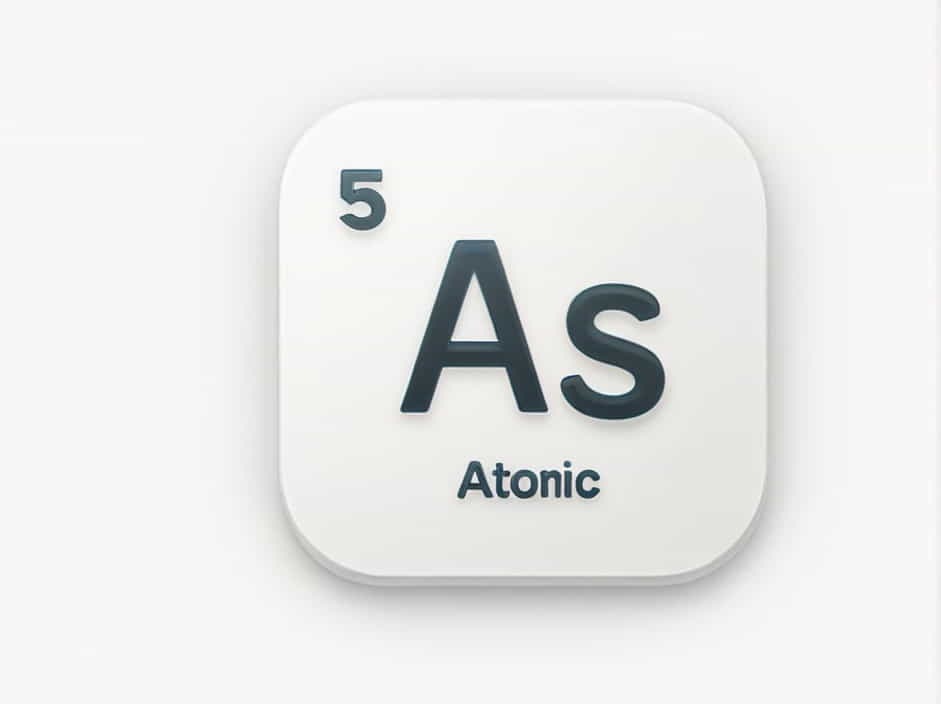The periodic table of elements is one of the most important tools in chemistry, helping scientists understand the properties and relationships of different elements. One of the key features of the periodic table is the atomic mass, which represents the average mass of an element’s atoms.
Understanding atomic mass is crucial in chemistry, physics, and various scientific applications, from calculating chemical reactions to determining isotopic compositions. This topic will explore what atomic mass is, how it is calculated, and why it is important in the periodic table.
What Is Atomic Mass?
Definition of Atomic Mass
Atomic mass, often measured in atomic mass units (amu), represents the weighted average mass of all naturally occurring isotopes of an element. Unlike the mass number, which is a whole number representing the total protons and neutrons in a single atom, atomic mass considers isotopes and their relative abundance.
For example, carbon (C) has an atomic mass of 12.01 amu, even though its most common isotope, carbon-12, has exactly 12 atomic mass units. The small difference comes from the presence of carbon-13 and other isotopes that slightly increase the average mass.
Atomic Mass vs. Mass Number
It’s essential to distinguish atomic mass from mass number:
| Property | Atomic Mass | Mass Number |
|---|---|---|
| Definition | Weighted average of all isotopes | Total protons and neutrons in an atom |
| Can Have Decimals? | Yes | No |
| Example (Carbon) | 12.01 amu | 12 (for carbon-12) |
How Is Atomic Mass Calculated?
Understanding Isotopes
Most elements exist in nature as a mix of different isotopes-atoms with the same number of protons but a different number of neutrons. The atomic mass of an element is calculated based on:
-
The mass of each isotope
-
The relative abundance (percentage) of each isotope
Formula for Atomic Mass
The formula to calculate atomic mass is:
Where:
-
m_1, m_2, m_3, … are the masses of each isotope
-
f_1, f_2, f_3, … are their relative abundances (in decimal form)
Example Calculation: Atomic Mass of Chlorine
Chlorine has two major isotopes:
-
Chlorine-35 (mass = 34.969 amu, abundance = 75.77%)
-
Chlorine-37 (mass = 36.966 amu, abundance = 24.23%)
Using the formula:
This matches the atomic mass of chlorine on the periodic table.
Why Is Atomic Mass Important?
1. Helps Identify Elements
Every element has a unique atomic mass that helps distinguish it from other elements. This property is crucial in chemical analysis and research.
2. Essential in Chemical Reactions
The atomic mass is used in stoichiometry, the study of the amounts of reactants and products in a chemical reaction. It allows chemists to:
-
Calculate molar masses
-
Determine the proportions of elements in compounds
-
Balance chemical equations
3. Important for Isotopic Studies
Scientists use atomic mass data to study radioactive decay, dating fossils (radiocarbon dating), and nuclear reactions. Understanding isotopes helps in fields like:
-
Medicine (radioisotopes in cancer treatment)
-
Archaeology (carbon dating)
-
Energy production (nuclear power)
Atomic Mass and the Periodic Table
How Atomic Mass Varies Across the Periodic Table
Atomic mass generally increases as you move:
-
Left to right across a period – More protons and neutrons are added to the nucleus.
-
Down a group – Atoms gain additional electron shells, increasing mass.
For example:
| Element | Atomic Mass (amu) |
|---|---|
| Hydrogen (H) | 1.008 |
| Oxygen (O) | 16.00 |
| Iron (Fe) | 55.85 |
| Gold (Au) | 196.97 |
Elements with Unusual Atomic Masses
Some elements have atomic masses that don’t follow a simple pattern. For example:
-
Boron (B) and Magnesium (Mg) have atomic masses that seem lower than expected due to the abundance of lighter isotopes.
-
Lead (Pb) has a higher atomic mass than nearby elements due to its mix of stable isotopes.
Atomic Mass in Real-World Applications
1. Pharmaceuticals and Medicine
-
Isotopes of elements like carbon (C-14) and iodine (I-131) are used in medical imaging and treatments.
-
Understanding atomic mass helps in drug formulation and the development of radioactive tracers.
2. Space Exploration and Nuclear Science
-
Elements with high atomic mass, such as uranium (U-238) and plutonium (Pu-239), are used in nuclear reactors and space probes.
-
Scientists rely on precise atomic mass measurements for fuel efficiency and isotope analysis.
3. Environmental and Geological Studies
-
Carbon-14 dating helps archaeologists determine the age of ancient fossils and artifacts.
-
Isotopic studies help scientists analyze climate change by examining oxygen isotopes in ice cores.
Fun Facts About Atomic Mass
-
Why is oxygen’s atomic mass 16.00 and not a decimal?
- Oxygen’s most common isotope is oxygen-16, making up over 99% of natural oxygen, leading to an atomic mass close to 16.00.
-
Why does hydrogen have an atomic mass of 1.008 instead of exactly 1?
- Hydrogen has three isotopes (protium, deuterium, and tritium). Protium (H-1) is the most abundant, but the presence of deuterium (H-2) and tritium (H-3) slightly raises the average atomic mass.
-
Why do synthetic elements have atomic masses in brackets [ ]?
- Some elements, like Oganesson (Og), are man-made and unstable, meaning their atomic mass is not a fixed value but an estimated range.
The atomic mass is a fundamental concept in chemistry, helping scientists understand the composition, reactions, and properties of elements. It plays a critical role in nuclear science, medicine, environmental studies, and space exploration.
By understanding how atomic mass is calculated, why it matters, and how it appears on the periodic table, you gain deeper insights into the building blocks of the universe. Whether in chemical experiments, isotopic studies, or advanced scientific research, atomic mass is an essential property that continues to shape our understanding of the natural world.
